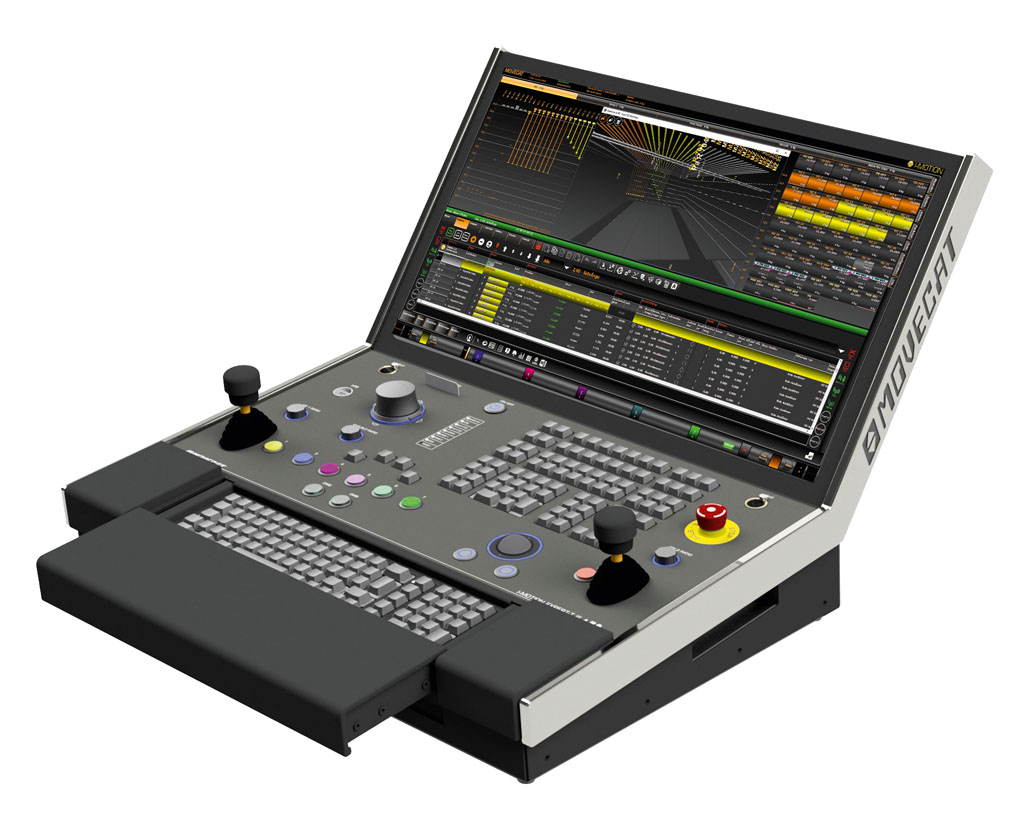TECH TALK
23 Oct 2024
Seven key questions you should ask before you buy a chain hoist

Subscribe to CX E-News
So, you’ve just bought a shiny new PA system or a LED screen and truss, and now you need some chain hoists to suspend it.
All chain hoists are created equal – Right? Well not really. Here are seven key questions you should ask before you buy a chain hoist:
1. Load Requirement
Let’s start with the basics . . .
Hoists come in load ratings from 125kg through to 2500kg and higher. Typical Single Fall rigging hoists in Australia are rated at 250kg, 500kg and 1000kg. For simple deterministic loads, the load can generally be shared between the hoists, however for more complex loads this becomes a non-trivial discussion (see the side bar for a discussion of what this means).
Chain hoists generally come in Single Fall (strand of chain) or Double Fall (two strands of chain with a pulley in the hook body).
Single Fall is a safer and preferred option. The chain in a Double Fall hoist can twist on itself which can cause catastrophic chain failure. Double Fall hoists need considerably more care and attention than the Single Fall variety and should only be used when there is no alternative available.
2. Speed
So now we have looked at the weight, how fast do we need to move the load?
Typical rigging hoists travel at a fixed speed of 4m per minute (most common speed available) or 8m/min (not always available).
Fixed speed hoists are not generally available at speeds greater than 8m/min.
Variable speed hoists can travel up to 30m/min for specialist applications.
Another characteristic worth mentioning here is the Duty Cycle of a hoist – no chain hoist is designed for continuous operation – periodic operation is the norm, so long drifts and frequent use may need special consideration.
While a faster hoist may seem desirable, it will require a larger motor for a given load and will therefore cost more. While slow and steady is generally a good adage, just remember that at 4m/min, you will be holding the button for 9 minutes to get the full travel for a 36m hoist.
3. Configuration
So now we know the load and the hoist speed, there are a number of other physical features that we should look at. Some of the many items in this category that you might want to think about include:
- • Remote Control/Direct Control (the norm in Australia and New Zealand is remote control with the connection to the hoist via a six-pin square connector)
- • Motor up/Motor down (motor fixed to the top rigging point or motor traveling up and down the chain)
- • Attachment method (Hook to Eye, Hook to Hook etc)
- • Height of Lift
- • Handles to assist with handling
- • IP rating
- • Packaging
Selecting the optimal physical configuration of the hoist is essential to maximise its usefulness and ease of use – you don’t want a hoist that is too short for that other venue, or in some applications one that can’t be easily converted from motor up to motor down.
4. Monitoring
That covers the basics for typical rigging hoists. But if you need a hoist to support a truss with more than two hoists, or grid with more than three points, then perhaps you should be looking for a more sophisticated hoisting solution. Hoists are available with additional features and monitoring functions that may be useful for positioning or required for safety. These might include:
- • Load Monitoring – Load Cells report the actual weight of a load and can report both underweight and overload conditions
- • Run/Direction/Position Monitoring – Encoders report that the hoist is actually moving, its direction and relative position
- • Hour Meter – can assist with maintenance and service intervals and provides valuable data for determining the remaining lifespan of the hoist
In conjunction with an appropriate control system, these features can greatly enhance the safety and operation of a hoist system, particularly when an Indeterministic load is involved (see Side Bar). Generally, a solution will not only require the appropriate features to be fitted to the hoists but also a specialist control system to provide monitoring, user feedback and support.

5. Operation and Control Requirements
There are a number of operational requirements that may influence the configuration of the hoist and/or control system that may be required
- • Do you require Group moves
- • Is Asynchronous or Synchronous operation required
- • Do you need control dependent on load and/ or position
- • What are the Control Pendant/Desk/Rack options
Like the monitoring features discussed above, the operational requirements mentioned in this section are often associated with more complex systems used to support mother grids and other muti-point loads.
These control features are also commonly found within C1 Fixed Speed and Variable Speed hoisting systems used for personnel flying such as the MoveKet KES system.
6: Compliance
The Australian crane code AS1418 has a part dedicated to chain hoists, however this standard only describes basic industrial hoists (equivalent to a D8 hoist – see below).
It is reasonable to say that there is no Australian Standard that describes chain hoists that support higher levels of safety for use in the entertainment industry (supporting loads without using secondary tethers).
The Australian Safe Work Regulations requires a PCBU (Person Controlling a Business or Undertaking) to only use hoists designed for “the purpose” when moving or suspending loads over persons.
While there is no directly applicable Australian Standard covering entertainment applications, the German code of practice ‘igvw – SQP2’ describes the design and use of chain hoists for use in the event technology industry and is widely recognised as international best practice.
If you select hoists according to this code of practice and follow its requirements for use of the hoist, then it is the generally held opinion that you will have fulfilled your Safe Work Regulation obligations.
The three main classifications of hoists in the code of practice are D8, D8 Plus, and C1. The following is an excerpt from the igvw-SQP2 code:
D8: Electric chain hoists that must not be used to hold or move loads over people without additional safety devices. Generally, a secondary safety device (tether) shall always be installed for each D8 electric chain hoist.
D8 Plus: Electric chain hoist is constructed, dimensioned and equipped in such a way that it is qualified for holding of overhead loads over people without a secondary safety device.
C1: Electric chain hoists are generally suitable for holding and moving overhead loads over people.
Generally, if you are looking to use hoists where you are suspending loads over people you should be looking for a D8 Plus hoist as a minimum standard. The use of multiple or more highly load rated D8 hoists without tethers is not a substitute for the increased level of safety offered by a D8 Plus hoist and should not be considered unless you have a robust and independently audited Risk Mitigation strategy. Remember, as a PCBU, you need to be able to demonstrate how you have fulfilled your Safe Work Regulation obligations.
7. Life Cycle
There is a common misconception that chain hoists have a mandatory limited life – this is simply untrue.
- • There is no Australian WHS legislation that mandates retirement or overhaul (like there is for access equipment)
- • Users and PCBU’s need to follow the hoist manufacturers guidelines for maintenance and servicing
- • A minimum of annual inspection and load test is required plus inspection by an ‘expert’ every three years
As you can see, there is more to selecting the correct hoist for a particular application than might be anticipated. While picking a load up with two hoists is relatively straight forward, the introduction of a third hoist to a truss system changes the game completely. The issue of deterministic and indeterministic loads (see the side bar) can introduce complexities that can only be realistically resolved through the use of hoists and control systems with added safety and monitoring systems such as load cells, position encoders and/or interlock systems to ensure safe operation.
As a PCBU you have a legislative Duty of Care to understand the complexities and applications of these systems. If you are unsure, then please consider seeking advice from an entertainment rigging professional before this becomes an issue for your business.
Please drop in and have a chat to the folks on The P.A. People stand at ENTECH around Australia or come to the Seven Things You Need To Ask Before You Buy A Chain Motor presentation at 1:30 pm in each city. Alternatively, feel free to get in touch at venueengineering@papeople.com.au
When you may need some extra advice…
As mentioned in our introduction, all loads that are to be suspended can be categorised as either statically deterministic or statically indeterministic. If the load you are suspending is statically indeterministic you might be well advised to seek the advice of a qualified professionals.
Deterministic or Indeterministic?
Statically determinate load system
In a statically determinate load system, all loads and reactions (loads applied on
individual electric chain hoists and anchor points) can be analysed using basic mathematical methods (three equations of equilibrium).
Examples of a statically determinate load system could be:
- • Loads on single electric chain hoists (point load)
- • Loads on two electric chain hoists (single span truss or a two point pickup)
- • Area loads on three electric chain hoists (a triangular truss)
Statically indeterminate load system
In a statically indeterminate load system, the reactions (loads applied on individual electric chain hoists and anchor points) can only be analysed using complex mathematical methods (more than three equations of equilibrium).
Examples of a statically indeterminate load systems could include:
- • Linear loads on more than two electric chain hoists (multi-span truss)
- • Area loads on more than three electric chain hoists
- • Guided loads
A common example of an indeterminate load might be a LED screen suspended on a truss with three or more motors. It would be very easy for one hoist to be either overloaded or underloaded without the operator’s knowledge. In this case you could use load cells to better understand how each hoist in the system is loaded or ensure that every hoist in the system can safely support the load of the entire truss and LED screen. Food for thought.
Subscribe
Published monthly since 1991, our famous AV industry magazine is free for download or pay for print. Subscribers also receive CX News, our free weekly email with the latest industry news and jobs.






